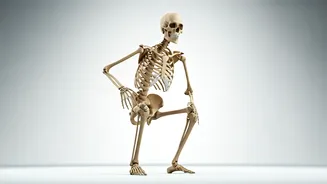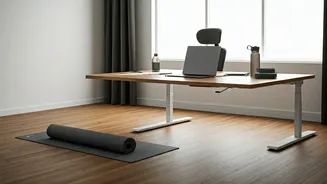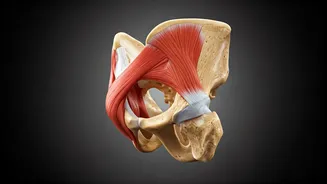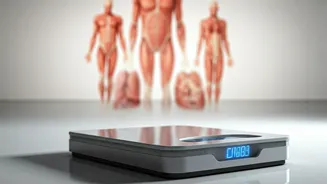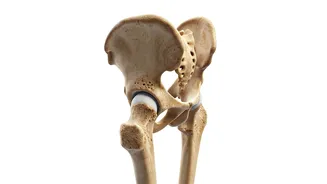Importance of Hip Health
The health of your hips plays a vital role in everyday activities, and it also contributes to overall mobility and comfort. Hips act as the body's central
foundation and can be affected by the demands of a sedentary lifestyle. Prolonged sitting can lead to stiffness and weakness in the hip muscles, potentially causing discomfort and limiting your range of motion. Consistent exercise is important for maintaining healthy hips. Regular physical activity that incorporates hip-focused exercises can counteract the negative effects of inactivity. By strengthening the muscles around the hips, individuals can improve their stability, reduce the risk of injuries, and enhance their ability to perform daily tasks with ease. Prioritizing hip health ensures a better quality of life. Simple exercises can improve the health and function of your hips, which is essential for overall well-being. This will increase stability, flexibility, and overall mobility, making everyday movements easier.
Exercise 1: Hip Bridges
The hip bridge is an excellent exercise for strengthening the glutes and hamstrings, which are essential for hip stability and proper function. To perform a hip bridge, begin by lying on your back with your knees bent and feet flat on the floor, hip-width apart. Your arms should be resting by your sides. Engage your core, and lift your hips off the floor, squeezing your glutes at the top of the movement. Your body should form a straight line from your shoulders to your knees. Hold this position for a few seconds, then slowly lower your hips back down to the floor. Repeat this movement for several repetitions. This exercise can be modified and made more challenging by adding weights or elevating your feet. By regularly doing hip bridges, you can strengthen the muscles that support your hips, improving your posture and decreasing lower back pain.
Exercise 2: Clamshells
Clamshells primarily target the hip abductors, the muscles on the outside of your hips. This movement helps improve hip stability and prevents injuries. To start, lie on your side with your knees bent and your feet stacked on top of each other. Keep your heels aligned and your core engaged. Keeping your feet together, lift your top knee as high as you comfortably can, like opening a clamshell. Pause at the top, squeezing your glutes, and then slowly lower your knee back down. Repeat this movement for several repetitions, then switch to the other side. You can increase the difficulty by using a resistance band around your thighs. Clamshells are an effective exercise that can improve your hip abductor strength and lead to more stability and balance.
Exercise 3: Side Leg Lifts
Side leg lifts are another effective exercise for targeting the hip abductors, as they work the muscles on the outer side of the hips. To perform this exercise, lie on your side with your legs straight and stacked on top of each other. Rest your head on your lower arm, and engage your core to stabilize your body. Slowly lift your top leg towards the ceiling, keeping it straight. Hold at the top for a moment, and then slowly lower your leg back down. Repeat this movement for several repetitions, and then switch sides. You can make this exercise more challenging by adding ankle weights. Side leg lifts will work those crucial hip abductors, which can improve your hip stability and mobility.
Exercise 4: Hip Flexor Stretches
Hip flexor stretches are important for improving flexibility and preventing stiffness, especially if you spend a lot of time sitting. To perform a hip flexor stretch, start by kneeling on one knee, with your other foot flat on the floor in front of you. Ensure your front knee is bent at a 90-degree angle. Gently lean forward, feeling a stretch in the front of your hip on the kneeling leg. Hold this stretch for 20-30 seconds, then switch sides. It is possible to deepen the stretch by squeezing your glutes as you lean forward. Regular hip flexor stretches can counteract the effects of prolonged sitting, helping to relieve tightness and improve your range of motion. Make hip flexor stretches a regular part of your daily routine to keep those hips feeling open and free.
Exercise 5: Piriformis Stretch
The piriformis muscle, located deep in the buttock, can become tight and contribute to hip pain and sciatica. The Piriformis stretch helps to alleviate tension in this muscle. To do this stretch, lie on your back with your knees bent and feet flat on the floor. Cross one ankle over the opposite knee. Gently pull the thigh of the bottom leg towards your chest until you feel a stretch in your hip and buttock. Hold this stretch for 20-30 seconds, then switch sides. If you don't feel a stretch, you can gently pull the thigh closer to your chest. Consistent piriformis stretches can help to relieve pain, improve hip mobility, and reduce the risk of sciatica symptoms. The regular stretching of the piriformis muscle reduces strain and promotes hip health.
Exercise 6: Glute Bridges Variations
Glute bridges are already discussed, but there are multiple ways to modify and intensify them. For instance, you can try single-leg glute bridges. Lie on your back with your knees bent and feet flat on the floor. Lift one leg straight up towards the ceiling. Then, lift your hips off the floor, squeezing your glutes at the top of the movement. Lower your hips back down and repeat. This variation increases the challenge for each leg. Another variation is adding resistance bands, either above the knees or around the ankles. These bands add resistance and force your muscles to work harder. You can also add weight by placing a weight plate or dumbbell on your hips. Experiment with these variations to find what works best for you and keeps things challenging. The different versions of the glute bridge give you the best hip strength workout.


